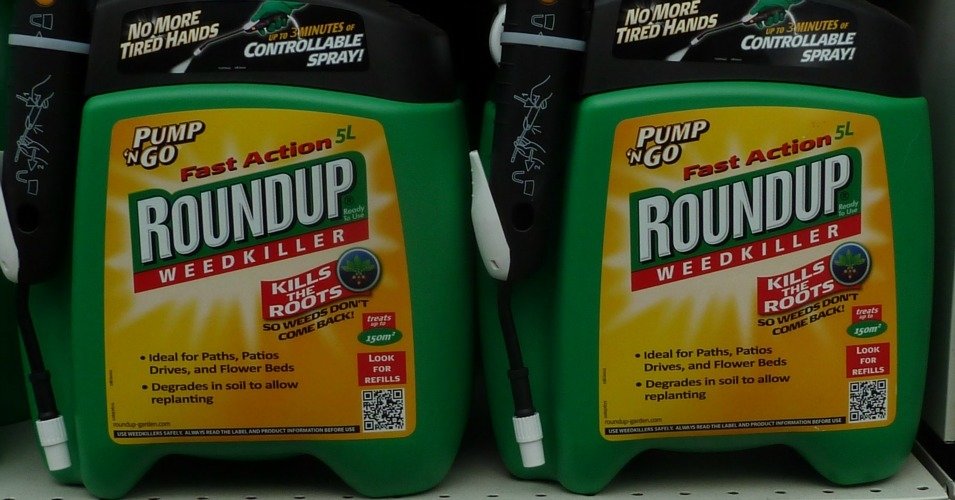Author of new report says growth in its use 'will likely contribute to a host of adverse environmental and public health consequences'
Glyphosate, the key ingredient in Monsanto's herbicide Roundup, is now the most heavily used weed killer ever and its use has exploded in the past decade, a new report finds, a fact that may portend "a host of adverse environmental and public health consequences."
The new paper on the global use of the herbicide comes less than a year after the World Health Organization's International Agency for Research on Cancer classified it as "probably carcinogenic to humans."
Since its introduction in 1974, 18.9 billion pounds of glyphosate have been used globally, author Charles Benbrook writes in the paper, but 74 percent of all glyphosate sprayed on crops has happened in just the last decade.
In fact, since the introduction of "Roundup Ready" crops—those engineered to be resistant to the herbicide—in 1996, there's been close to a 15-fold increase in the use of glyphosate globally. In the United States, there's been a 20-fold increase, from 12.5 million pounds in 1995 to 250 million pounds in 2014.
"Not only has glyphosate been sprayed on more hectares planted to HT [herbicide tolerant] crops, it has also been applied more intensively—i.e., more applications per hectare in a given crop year, and higher one-time rates of application," Benbrook writes.
In addition, the report adds, increased use of glyphosate can be attributed to the "steady expansion in the number of crops registered for use on glyphosate product labels, the adoption of no-tillage and conservation tillage systems, the declining price per pound of active ingredient, new application method and timing options, and new agricultural use patterns (e.g., as a desiccant to accelerate the harvest of small grains, edible beans, and other crops)."
Among the problems this has spawned is "the spread of tolerant and resistant weeds in the U.S. and globally," Benbrook writes, and because "glyphosate is moderately persistent and mobile, levels in surface and groundwater will likely rise in step with use, and this will increase the diversity of potential routes of animal and human exposure."
"The dramatic and rapid growth in overall use of glyphosate will likely contribute to a host of adverse environmental and public health consequences," Benbrook adds.
The report, according to Mary Ellen Kustin, senior policy analyst at Environmental Working Group, shows the problems with a chemical-based approach to farming, as it "makes it clear that the use of glyphosate, combined with the dominance of genetically engineered crops, has produced a looming public health threat both in the U.S. and around the world."
"Farmers have sprayed billions of pounds of a chemical now considered a probable human carcinogen over the past decade. Growers spray glyphosate several times a year on the majority of U.S. cropland. The sheer volume of use of this toxic weed-killer is a clear indication that this chemical dependency is a case of farming gone wrong," she stated.
Comment: More frightening information about the dangerous effects of Glyphosate in the environment:
- US: Glyphosate Pollutes Air, Rain and Rivers
- Is GMO Farming Poisoning The World's Drinking Water?
- Study Shows: Monsanto's Roundup Ravaging Butterfly Populations
- Monsanto's Roundup Spawns Superweeds Consuming Over 120 Million Hectares
- Un-Earthed: Is Monsanto's Glyphosate Destroying The Soil?
It takes approximately 1,000 years for the earth to produce (on its own) a 2.5 inch thick layer of fertile soil. And yet, it may take only a single application of Roundup to irreversibly alter the microbial populations within the soil - much in the same way that a single round of antibiotics may seriously and irreversibly alter your gut flora for the rest of your life.
This new study found that adverse changes in selected food microorganisms, including death and growth inhibition, were observed at lower concentrations of Roundup exposure than those recommended in agriculture. Researchers also confirmed previous findings that adjuvants or so-called "inactive" ingredients in Roundup formulations were, in some cases, more toxic than the active ingredient itself, namely, glyphosate.
Yet, as she wrote Wednesday, "It doesn't have to be this way."
Organic farmers, for instance, don't use glyphosate or any synthetic pesticides. Although only about 1 percent of American farms are currently certified organic by the Department of Agriculture, the rising sales of organic food may soon lure more. Organic sales topped $39 billion in 2014, according to the Organic Trade Association."The next Farm Bill will need to do more to help farmers become better stewards of the land," Kustin concludes.
Short of organic farming, farmers can reduce their use of glyphosate and other chemicals by applying a variety of proven weed management techniques.
Unfortunately, however, Congress has funneled the bulk of taxpayer dollars spent on agriculture to growers who are ramping up the chemical treadmill by relying overly on toxic weed killers. Less than 1 percent of the funding spent under the federal Farm Bill has anything to with organic farming, and only a fraction of those dollars go to help farm operations become certified organic.
The study was published Tuesday in the journal Environmental Sciences Europe.




Comment: In addition to being a 'probable carcinogen' Glyphosate is a chemical-warfare agent: